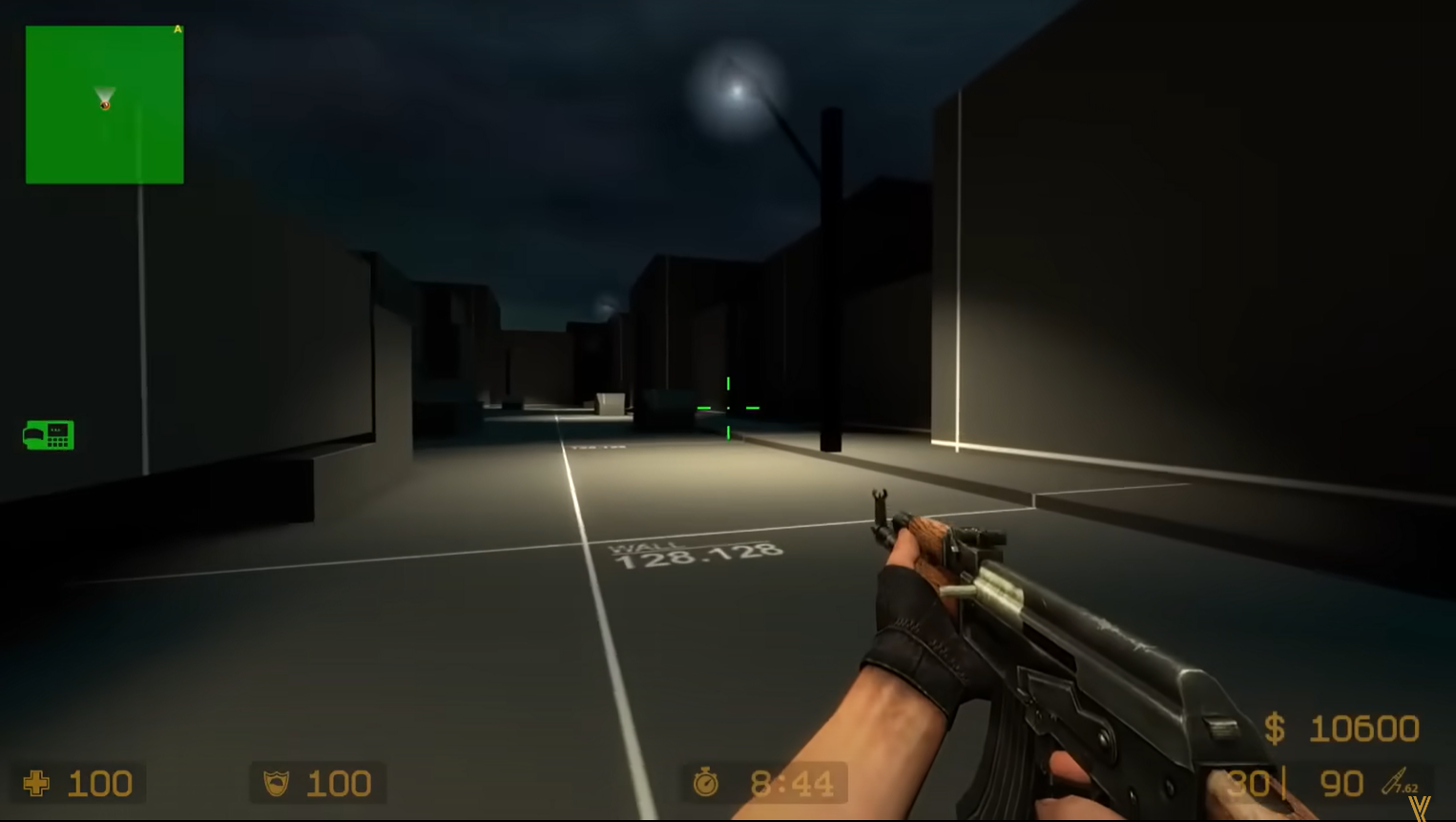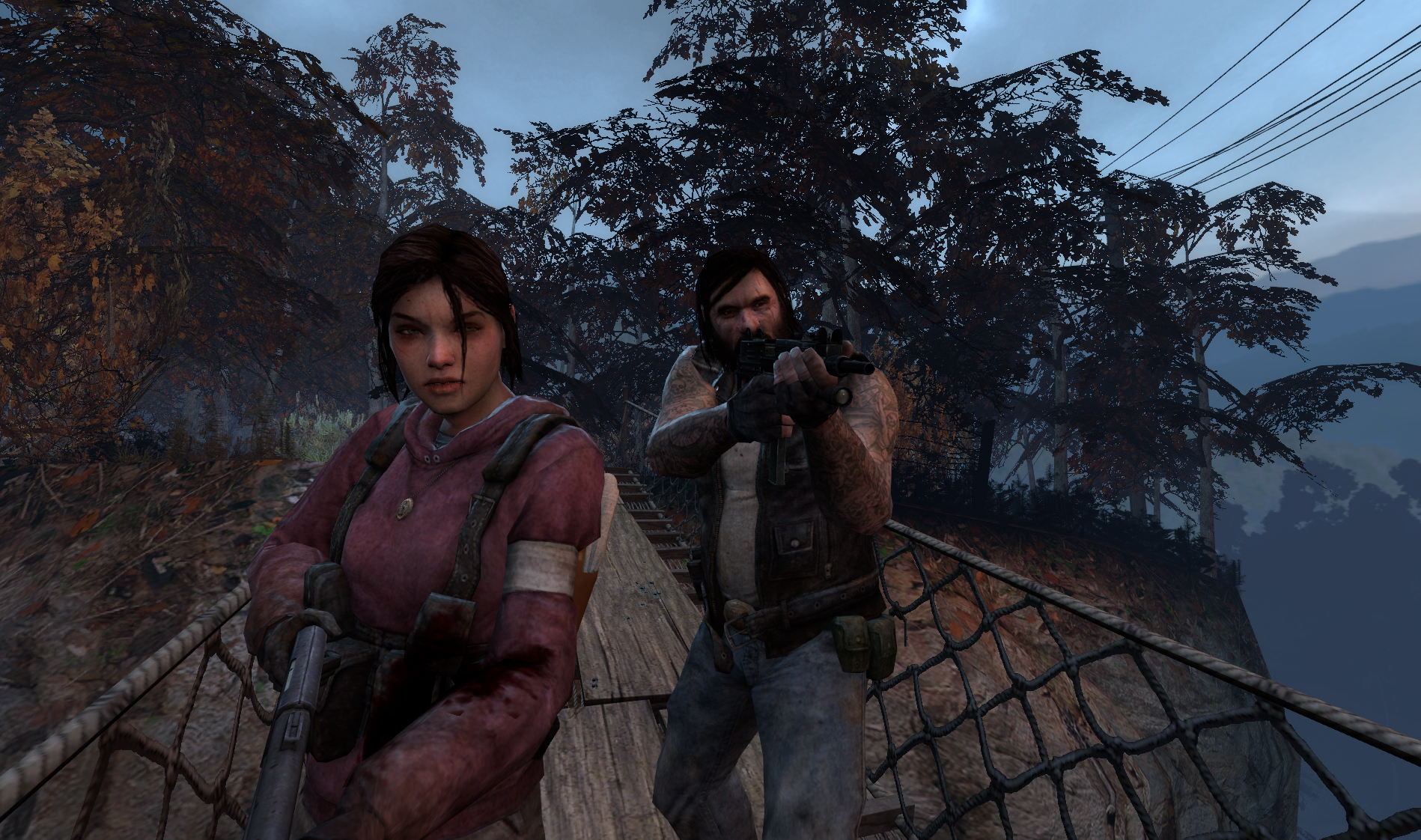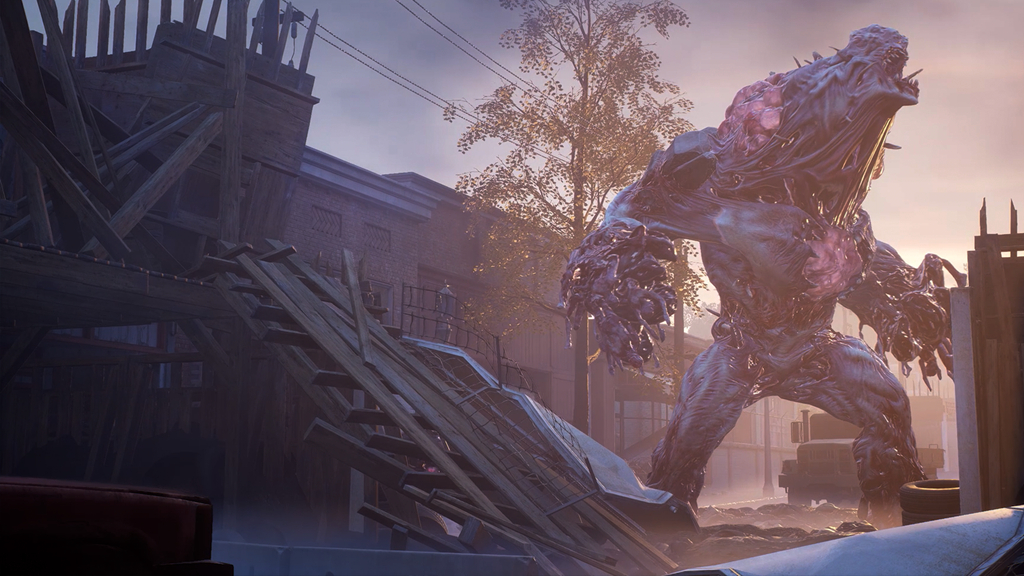
The latest bunch of Valve leaks have revealed the original map sources and prototype for the beloved and classic Left 4 Dead.
We haven’t had any real news from Left 4 Dead or its developers since Back 4 Blood released in late 2021. So when Youtuber Tyler McVicker (opens in new tab) posted a video revealing that the earliest prototype for Left 4 Dead had been leaked, we were pretty intrigued.
The leaked footage depicts a forgotten level of Counter-Strike: Source, codenamed Terror Strike, along with some map sources for the game that have never been seen before. This unreleased map is the second stage of prototyping that began with the Counter-Strike: Condition Zero and the map Zombie City.
When it comes to the scenery in this unfinished level, there’s not much to write home about. Its abandoned grey cityscape is eerily quiet and empty as you make your way through the onslaught of infinitely respawning counter-terrorists. On the bright side, you can see the first inklings of the popular undead game within the dimly lit city streets.
But don’t take our word for it. You can go play the original prototype for yourself right now. You can download the Zombie City map for yourself at GameBanana (opens in new tab), or you can set up your own server on Counter-Strike: Source. Just make sure to allow a lot of counter-terrorists to respawn and then have you and some buddies try to make it across the map.
Ancient history
The leaked prototype and map sources aren’t the first thing that surprised us about Left 4 Dead. The game’s production had a bit of an unconventional and rocky start.
For those who remember, Counter-Strike: Condition Zero had a turbulent time in production, being passed around from studio to studio in search of someone who could finally put the finishing touches to the game and bring it all together. Eventually, Left 4 Dead developer Turtle Rock pulled the game out of production limbo.
On the way to finally finishing Counter-Strike: Condition Zero, the developers over at Turtle Rock decided to test the waters out for another idea first. This would be the open-ended cityscape rush map, codenamed Zombie City. This idea would later go under more scrutiny thanks to Counter-Strike: Source in the map codenamed Terror Strike.
The goal of Terror Strike and Zombie City was for four players to make it from one side of the map to another while dodging the incoming melee attacks from counter-terrorists. If you got to the end, you could plant a bomb and then win the game.

Turtle Rock finally decided to take the leap and create the historic Left 4 Dead, but not without the help of every plumber’s favorite gaming studio: Valve. When Valve got wind of this undead project, it threw its hat in the ring. This renowned studio helped shape the game in terms of progression and story, while Turtle Rock developed it entirely in its own studio.
However, after interacting so closely with Valve, Turtle Rock began to have some difficulties. Valve purchased the studio and rebranded it to Valve South for a short time. Before long, the studio would meet an unfortunate fate. Valve decided to close up shop and take the rights to Left 4 Dead. It would later produce Left 4 Dead 2 entirely in-house.
Beating a dead game

Back 4 Blood failed to capture the joys of navigating the undead hellstorm with your closest friends
That wasn’t the end for Turtle Rock. After the closure, Phil Robb and Chris Ashton, two early days devs, decided to try restarting the indie studio.
They would later be contracted to work on its once golden-goose, Left 4 Dead and Left 4 Dead 2 by Valve. But for the most part, Turtle Rock tried to start anew and head in its own direction. They would instead make more casual games like Leap Sheep and Journey of the Gods.
However, that didn’t last very long. You can take a developer out of the zombie hellscape, but you can’t take the zombie hellscape out of the developer. 13 years after its initial steps into Left 4 Dead, Turtle Rock released a spiritual successor to the game, Back 4 Blood.
Unfortunately, it didn’t hold up to the frantic and bloody fun of Left 4 Dead. I’m not sure if it’s just been too long or if the people who made the Left 4 Dead magic simply weren’t around for Back 4 Blood’s development. Whatever the reason, Back 4 Blood failed to capture the joys of navigating the undead hellstorm with your closest friends.

For one, the cards and upgrades that Back 4 Blood introduced seemed to confuse and complicate the simple zombie-killing formula. These extras gave you various perks and items. While some of the perks were helpful, most just got in the way of starting a level and didn’t end up making a huge difference to the actual fights.
The reality, believability, and grit of Left 4 Dead are what made it such an iconic game
On the other hand, the core gameplay loop was uninspired and poorly paced. What began with simply navigating derelict towns in search of survivors somehow ended in giant radioactive ogre zombies. It didn’t feel like a believable progression. It simply didn’t capture the Left 4 Dead spirit.
Why should a zombie game be believable? It’s a fair question. But for me, the reality, believability, and grit of Left 4 Dead are what made it such an iconic game. There was no greater cause, no special ops, no mad scientist making green-gooey zombies. It’s just a group of survivors trying to make it from point A to point B, as opposed to the comparatively high-concept Resident Evil chicanery in Back 4 Blood. This simplicity made the game more intense and enjoyable; it was just you and thousands of zombies – how very intimate.
Back 4 Blood did let me down compared to its earlier siblings. Nevertheless, it was still refreshing to see Turtle Rock get back into the zombie business. Who knows, maybe Back 4 Blood will follow in Left 4 Dead’s footsteps and have an outstanding sequel.














